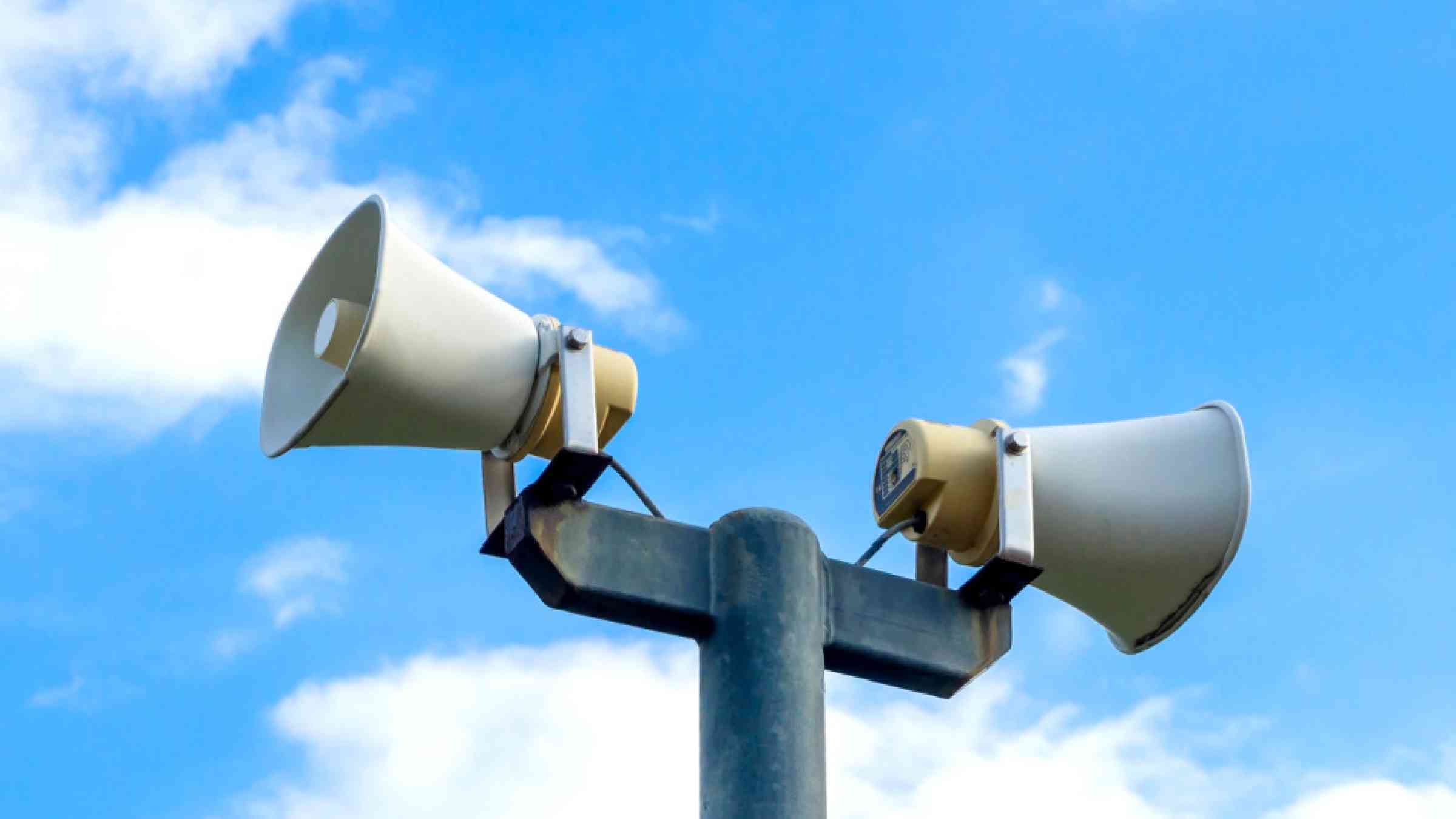Scaling up early warning systems for communities in fragile and conflict zones

In March 2022, the United Nations launched the "Early Warning for All" initiative, targeting global access to Early Warning Systems (EWS) by 2027 to mitigate extreme weather and climate change impacts.
This effort, supported by the World Bank and other partners, emphasizes the critical role of EWS in safeguarding lives, livelihoods, and infrastructure by providing advance warnings of hazards. However, achieving universal EWS access is challenging, particularly in regions affected by fragility, conflict and violence, where financial and human resources are scarce, and where disaster risk reduction is often overlooked in favour of immediate security concerns.
Despite the potential of EWS access to reduce disaster-related losses by $35 billion annually at a global implementation cost of about $1 billion, about one-third of the global population remains without it, a gap significantly widened in areas affected by conflict or fragility.
Missing out from the global efforts
Take the case of Afghanistan, a country highly exposed to a variety of natural hazards, including floods, droughts, storms and earthquakes. Despite progress in hydrometeorological (hydromet) services from the late 1940s, over two decades of war brought instability and insecurity that reduced public resources, capacities, collaboration, and coordination. Hydromet services, as well as EWS and disaster risk management governing bodies, did not escape these setbacks. For example, Taliban temporarily banned weather forecasting in the mid-1990s. Violent conflict destroyed critical flood risk reduction infrastructure, leaving the country’s population and resources increasingly vulnerable to disaster risks.
On other side of the globe in Haiti, over 96% of the population is exposed to natural hazards, such as hurricanes, flooding, and earthquakes . These threats are compounded by high poverty levels, vulnerability of critical infrastructure, unregulated urban expansion, and fragile government institutions. Years of political instability, gang violence, lack of access to basic services, corruption and a feeble justice system have eroded trust in the government’s capacity to manage disaster risks effectively, including communicating on risks and disseminating alerts. As a result, the development of reliable EWS has for long been severely impeded, thereby endangering the lives of the nation’s citizens.
Overcoming issues, bridging the gap
Despite the challenges, Haiti is committed to enhancing its EWS. The World Bank’s Strengthening Disaster Risk Management and Climate Resilience Project, with technical support from the Global Facility for Disaster Reduction and Recovery (GFDRR), is enabling the Civil Protection Directorate (DGPC) and the National Hydrometeorological Unit to design the national EWS. This collaboration focuses on creating standards and protocols for issuing alerts related to hurricanes, floods, and coastal waves and flooding, aiming to enhance disaster preparedness and response. These efforts are built on past initiatives, such as the 2020 hurricane preparedness communications campaign led by the DGPC. The success of this campaign stems from its integration with local culture and traditions, utilizing a song, educational podcasts and social media visuals. The initiative has trained civil society volunteers in hurricane preparation and response, reinforcing risk awareness in vulnerable communities and boosting trust in official early warning messages.
Turning back to Afghanistan, the World Bank and World Meteorological Organization used three-dimensional (3D) printing technology to locally produce materials for the construction of weather stations. Equipped stations can measure temperature, humidity, wind speed and direction, and precipitation, and are powered by solar panels, ensuring that they can operate even in areas with limited access to electricity. This cost-effective and sustainable technology has enhanced the coverage and accuracy of weather data in the country, particularly in remote and hard-to-reach areas where traditional weather stations are less feasible.
These examples highlight that, despite the severe challenges of violence, inequality, and poor governance, effective EWS solutions are achievable and FCV countries urgently need practical, cost-effective strategies tailored for their unique circumstances.
During the World Bank's Fragility Forum 2024 Partners Day, GFDRR hosted a side event on March 1st to foster discussions among operational teams on the critical need for tailored and contextualized approaches to EWS implementation in FCV settings. Addressing FCV-specific challenges is essential for safeguarding community well-being and achieving the Sustainable Development Goals by 2030 . By developing customized solutions, promoting community involvement, and leveraging innovative technologies, we can significantly improve early warning capabilities and resilience in these high-risk areas.